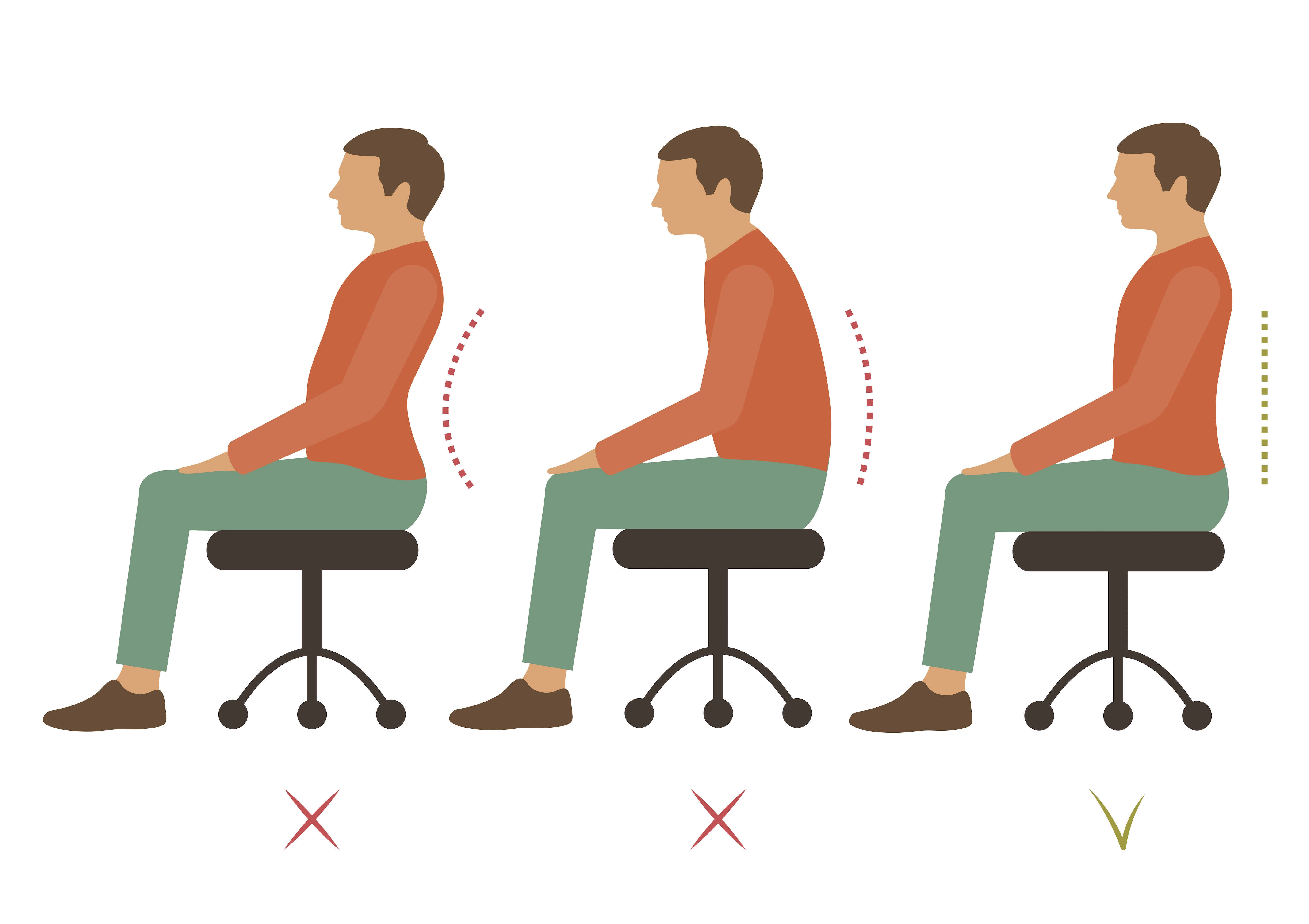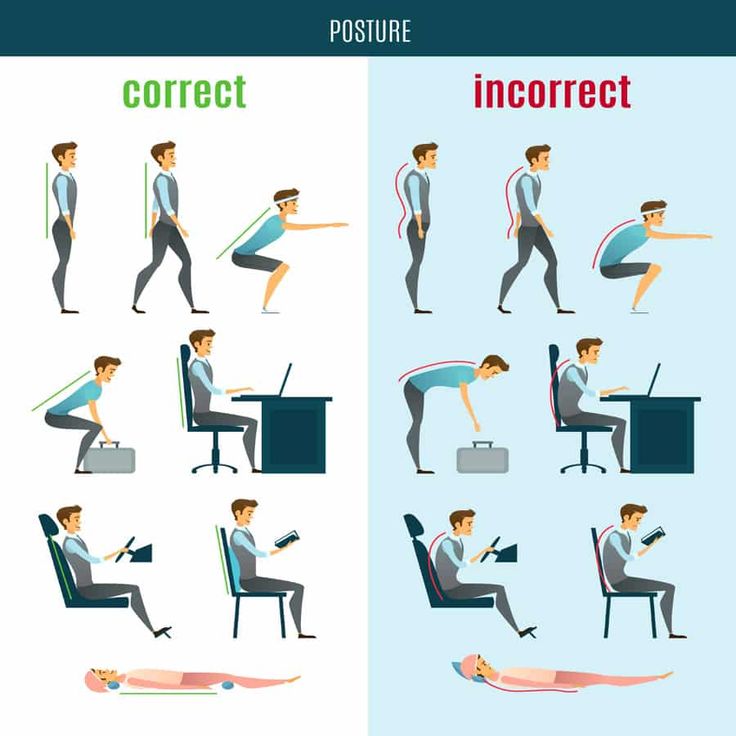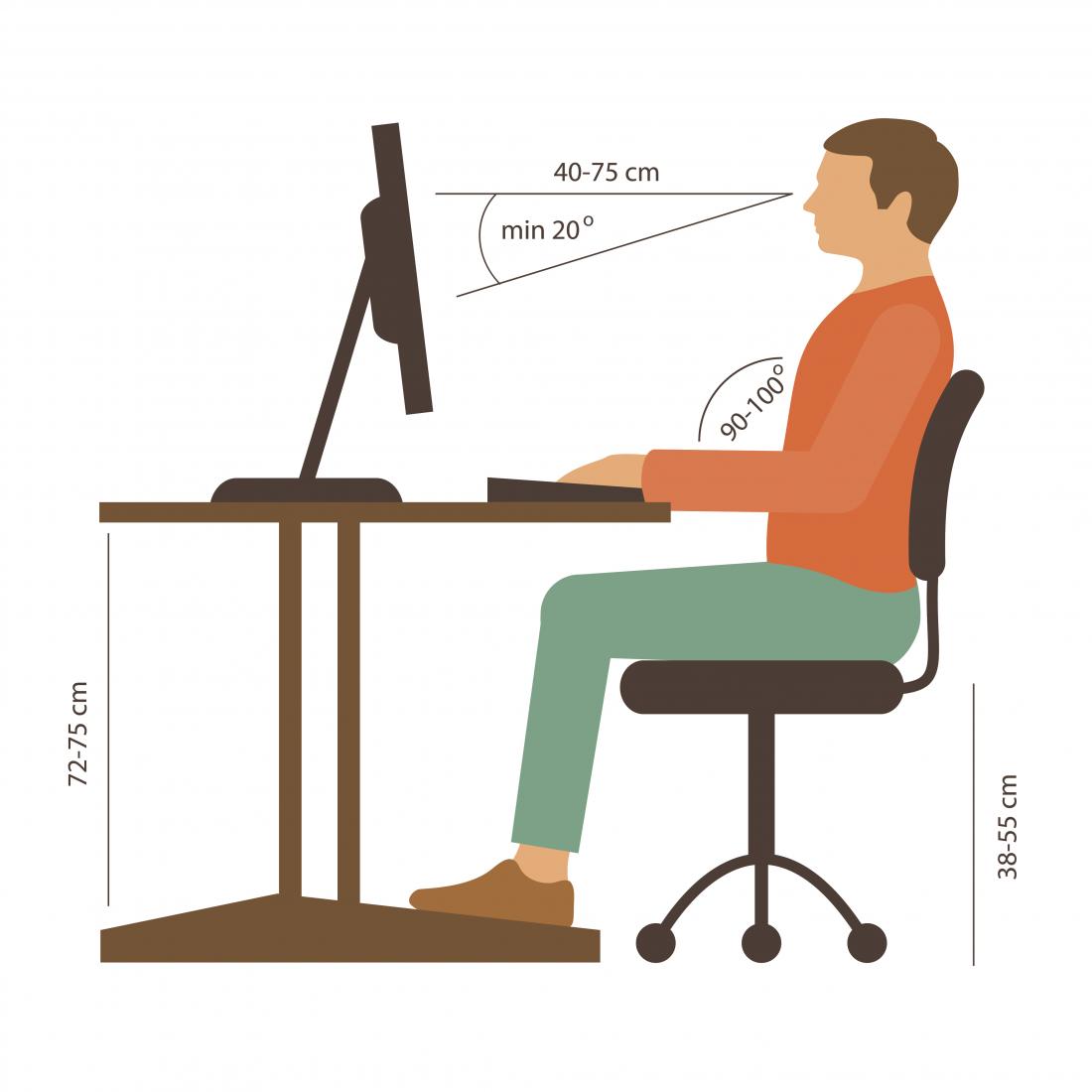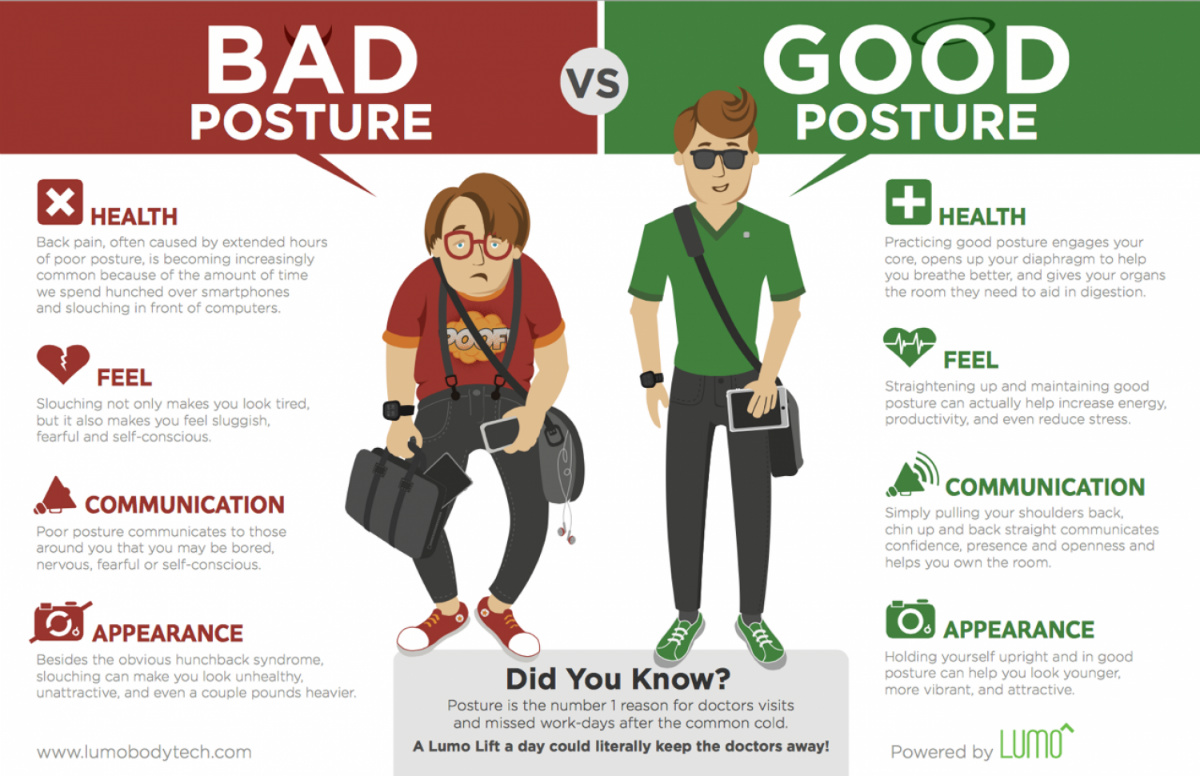A person’s sitting position can help maintain good posture and a healthy back and spine. Tips include using a suitable chair and keeping the back straight and feet flat on the floor.
Sitting with a straight back and shoulders can help prevent common complaints, such as lower back pain and a stiff neck.
Many people spend most of their day sitting down, as they tend to sit when commuting, working in an office, and studying or relaxing at home.
Prolonged sitting can cause various adverse health effects, including the misalignment of the musculoskeletal system, balance issues, impaired digestion, and reduced flexibility.
Most people can improve their sitting posture by following a few simple guidelines.
In this article, we look at good posture and explain the correct sitting position to achieve it, particularly when working at a computer.


Good posture means that the key parts of a person’s body are correctly aligned, with the right amount of support from muscle tension.
Correct posture can help by:

People usually adopt a sitting posture subconsciously when focusing on other things. A person’s sitting posture depends partly on the sort of equipment they use, which may include:
Types of sitting posture includeTrusted Source:
Pain Relief
Improved Mobility
Enhanced Posture Awareness
Prevention of Future Problems
Holistic Approach to Health
The best sitting position depends on a person’s height, the chair they use, and the activity they are doing while sitting.
A person can improve their posture and achieve a proper sitting position by:

Many people spend long periods sitting down. Sitting incorrectly, especially at a desk, can be bad for back health and posture.
However, by knowing what a good sitting posture looks like and following a few simple rules, most people can learn how to self-correct and thus achieve good posture.
Making additional lifestyle changes, such as exercising regularly and taking movement breaks throughout the day, can also help.




Success Rate